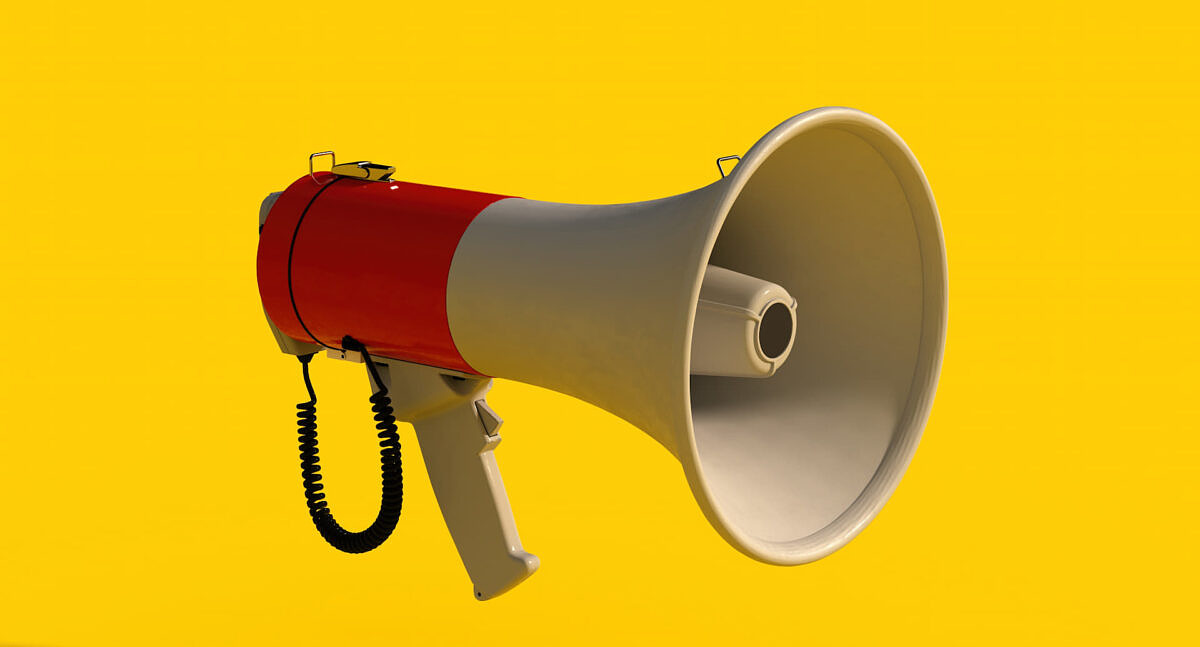Alexa, let’s design a better sounding world!
Church tower bells, car horns, ringing cell phones - acoustic information influences our everyday lives. Why are acoustic signals so effective? What functions does sound perform? And what does this mean for digital UX and the sound of entire brands?

The Exciting World of Audio User Experience
Whether we like it or not, audio UX is part of our everyday lives – from the ringtone of a mobile phone to the warning sound of a train arriving. It doesn’t matter whether we actively or unconsciously perceive sounds, because sound has an effect on us and significantly influences the UX of products and services in our everyday lives.
For users, even minimal use of auditory media can significantly improve the emotional connection to a product or a product’s joy of use.
In addition, studies also repeatedly examine the psycho-acoustic effect of sound.
What does that mean in a nutshell? Firstly, sound can be a powerful emotional trigger. Secondly, we can process audio signals subconsciously, more quickly and more directly, without actively thinking about them.
The Functions of Sound
UX sounds can be roughly divided into three different categories: user interface sound, SFX sound and music. Most digital applications predominantly use UI sounds, such as menu clicks or feedback sounds.
Besides its varying categories, audio UX can also be divided into different functionalities. We distinguish between three basic functions of sound: inform, naturalize, and emotionalize.
Inform
Since time immemorial, people have used sound as a medium to convey information, in addition to speech. If in the past it was drum rhythms that signaled danger over long distances, today it is notification sounds that inform us, for example, that we have successfully ordered dinner from a delivery service. Every Apple user is now familiar with the sound of an incoming mail or the freshly deleted recycle bin.
Naturalize
In the real world, it feels quite natural for us that objects “sound”, e.g., hitting a nail with a hammer produces a characteristic sound. However, this is somewhat different in the digital world. Learned auditory patterns help to simulate a lack of haptics (e.g., tap sounds produced by the iPhone keyboard) or to enhance the sense of spatiality in the context of AR applications.
Emotionalize
With sound, we can specifically influence users’ emotions. For example, various sports apps, such as the Nike Running app, use cheering sounds to cheer on the user when he or she reaches a section of the course in order to increase motivation. The Headspace app develops custom soundscapes that support specific moods or modes, such as focus or relaxation.
Best Practice
At first glance, audio UX is a complex subject with a wide range of functions and a multitude of application areas. Nevertheless, developing a successful sound experience that combines function and aesthetics can be broken down into five points:
#1 Less is more
Perhaps the most important question for UX sound design is – Does it improve the experience at this point in the journey? Most of the time, less sound, but used purposefully, leads to a more desirable result.
#2 Make it a family affair
As soon as more than one sound, i.e., a sound set, is to be created, rules of consistency and a coherent sound palette play an important role, just as with visual icon sets. Similarly, the connection to the brand should be clearly recognizable.

#3 Make your sounds unique – or not?
Not every sound needs to be unique. Many actions/moments require restraint on the sound level, so that hero interactions stand out via unique sound design.
#4 Repetition, repetition, repetition …
People have a reduced tolerance to certain sounds or to the stimuli associated with them. How often a sound is triggered while using an app is part of designing the sound.
#5 Testing
As with design, testing should be a major part of the process. This is the only way to validate the impact of sound on and within the UX in context and with real users on the end devices.
Brand Sound
Just as visual elements in UX design should match the brand style, UX sound should also be part of a brand’s strategic acoustic ecosystem. Sound helps to make the story and values of a brand audible and tangible to customers. And to merge different points of contact acoustically.





